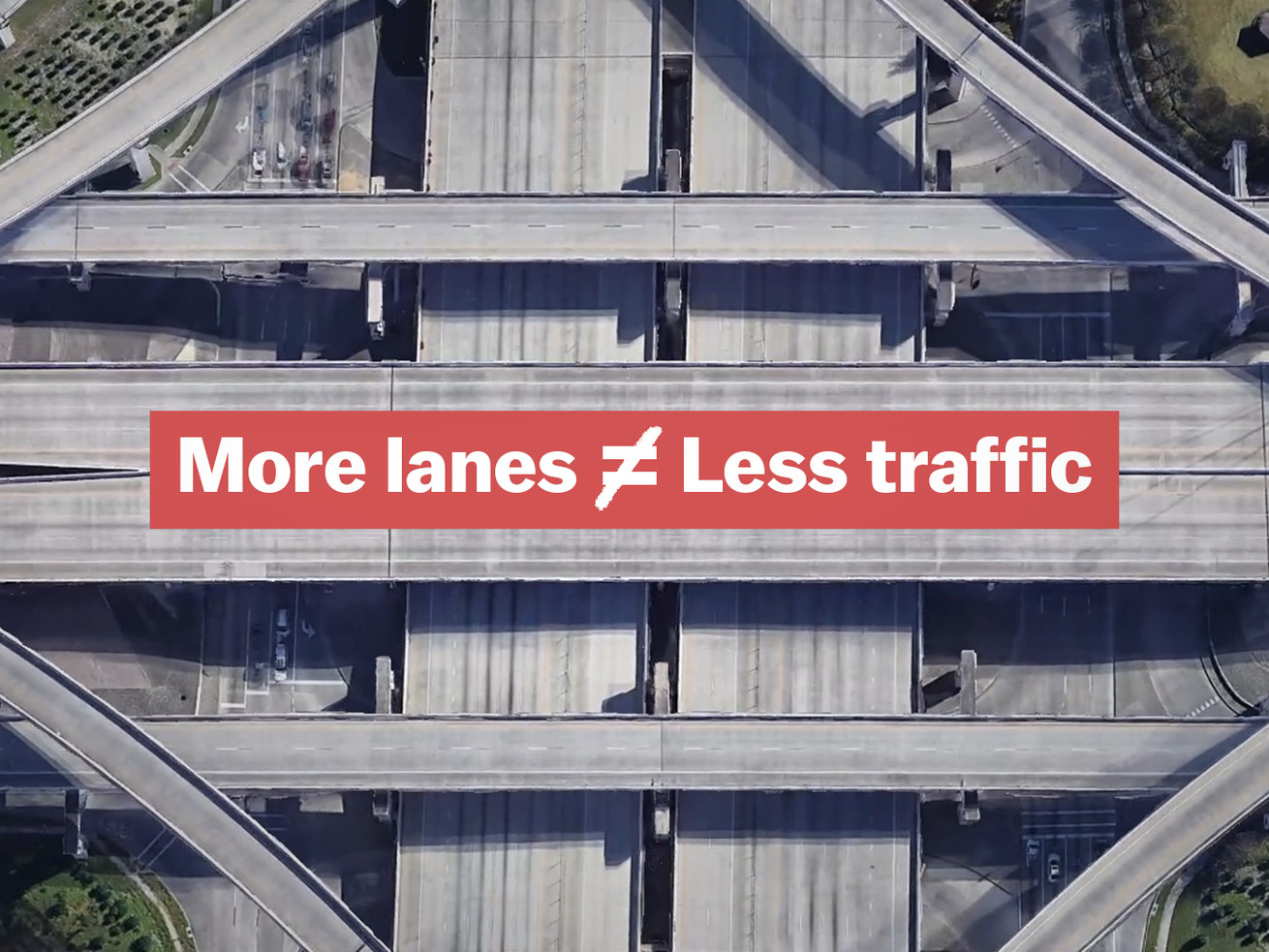Highway expansion projects don’t do what you might think they do.
The Katy Freeway outside of Houston has come to symbolize the epitome of American car culture. Following a nearly $3 billion expansion project that concluded in 2008, the freeway spans 26 lanes at its widest point (although some dispute whether you should count the peripheral frontage roads).
But it’s also come to symbolize something else: a transportation phenomenon called induced demand — the idea that building more infrastructure will just encourage more demand. In this case, the supply is highway lanes, and the demand is more and more drivers. Meaning: If you build more highway lanes, more drivers will fill them up.
The concept of induced demand has been around since the 1960s — nearly as long as the inception of the federal highway system — and has been proven by several studies since. But it still hasn’t stemmed the tide of big, expensive highway infrastructure projects as a Band-Aid to congestion.
Right now, transportation is the leading cause of greenhouse gas emissions in the US, and that is largely driven by single-occupancy car use. Most US cities revolve around the car, and because of that, it’s difficult to retrofit another system oriented around transit or walking. But there are some policies that could get more people off the highways in the short and long term.
In this video, we explain what happens after a highway expansion, and where new drivers come from to fill up new lanes.
You can find this video and all of Vox’s videos on YouTube.
Author: Laura Bult
Read More



